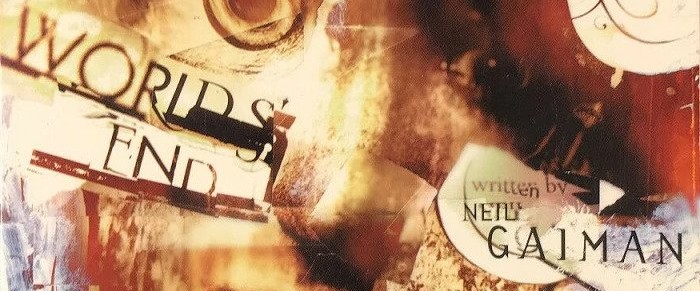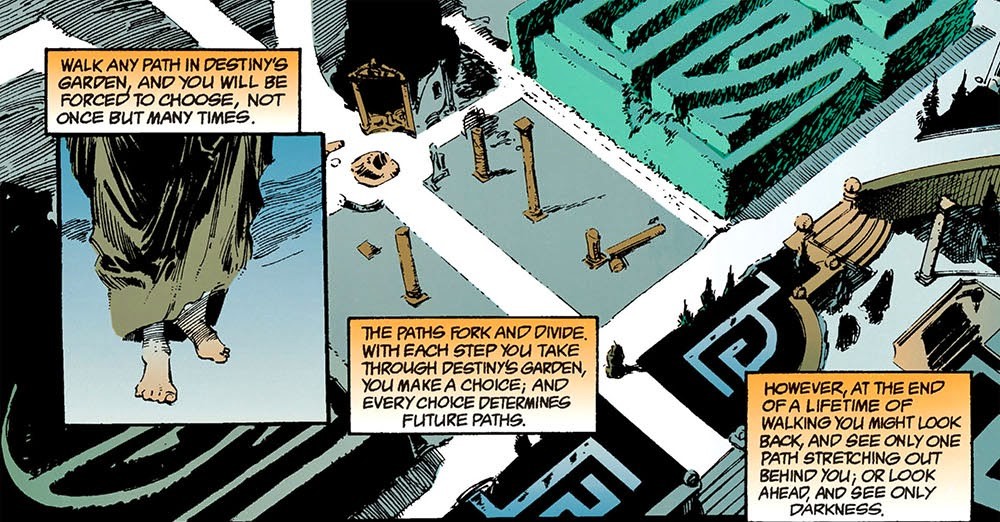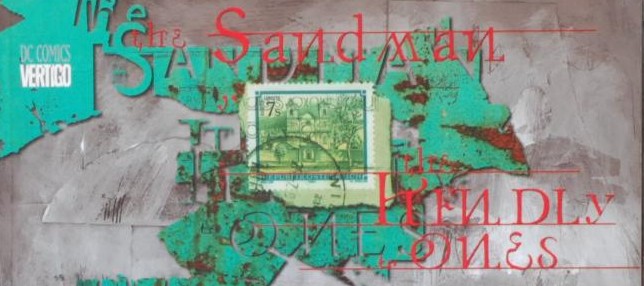Worlds’ End is the quiet before the storm. Or, well, in the context of the collection, it’s the quiet during the storm, since it’s about several travelers who are stuck in the titular inn telling each other stories while they wait out a “reality storm” (it’s The Sandman so just go with it).
The framing conceit is a good one, and the art by Bryan Talbot (pencils) and Mark Buckingham, Dick Giordano and Steve Leialoha (inks) works here (and I like Buckingham’s inks on Talbot’s pencils more than I have previously). I just wish there was more to connect the individual stories together.

It’s only six issues and five of those issues are short stories. Three of the five are vaguely about cities (“A Tale of Two Cities,” “Cluracan’s Tale,” and “Cerements”). “Hob’s Leviathan” and “The Golden Boy” are not, however, and those two just seem like a couple of leftover ideas Neil Gaiman had.
“Hob’s Leviathan” more or less just involves Hob Gadling, a sea monster, and a girl who’s disguised herself as a boy so she can be a sailor. Although it’s solid, it’s not as exciting as it may sound. “The Golden Boy” is about Prez Rickard, a DC Comics character from the early 1970s who was the first teenage president. It’s adequate but it comics across like a failed pitch Gaiman had for a full series about the character. The art for each of these is great, though, with Michael Zulli’s (pencils) and Dick Giordano’s (inks) very formal, intricate art carrying “Hob’s Leviathan” and Michael Allred’s crisp, bright art complimenting the optimism of “The Golden Boy.”
Out of the trio of stories about cities, “A Tale of Two Cities” is the most intriguing. It may stretch the limits of what I actually consider to be comics since it is, in effect, just a story illustrated by Alec Stevens, but it works for me. A man slowly realizes he’s stuck in a city’s dream and the kicker at the end is that he wonders what will happen when the city — or all of the cities — wake up. Cities being living things has been done before, but I like the idea that a city is dormant.
“Clurcan’s Tale” (art by John Watkiss) and “Cerements” (pencils by Shea Anton Pensa and inks by Vince Locke) are both fine, but also feel like slightly underdeveloped ideas Gaiman didn’t get to use elsewhere. I like the stories within the story of “Cerements” and the general idea of cities devoted to the burial of the dead, but it’s a bunch of characters who’ve never been seen before and will never really be seen again. It’s not fully realized enough for a one-off.
The framing story features coworkers Brant and Charlene who were traveling together before they got stuck in the inn is an adequate entry point. Brant’s a boring everyman but Charlene’s vaguely middle-age disenchantment with her life is too obvious to me. It seems like Gaiman just pulled from a generic list of “reasons why a woman may be bored with her life” and didn’t really give it much more thought. I would say the consistency of the artwork in the framing sequences do help pull everything together well and the switches in art styles don’t feel as jarring as they could be.
The funeral sequence (pencils by Gary Amaro and inks by Tony Harris) is powerful and beautiful, though, with remarkable two-page spreads and large images that fill the page. It’s a somber note that does very clearly tell the reader The Sandman probably isn’t headed toward some joyful ending.
Much like the characters in the Worlds’ End inn itself, Worlds’ End does feel like it’s just passing time by telling stories. That, in itself, is not a bad thing, especially for a comic that is, essentially about stories. It’s neither the high point nor the low point of The Sandman, but I just wish it felt less like a collection of leftover concepts and something more cohesive.




